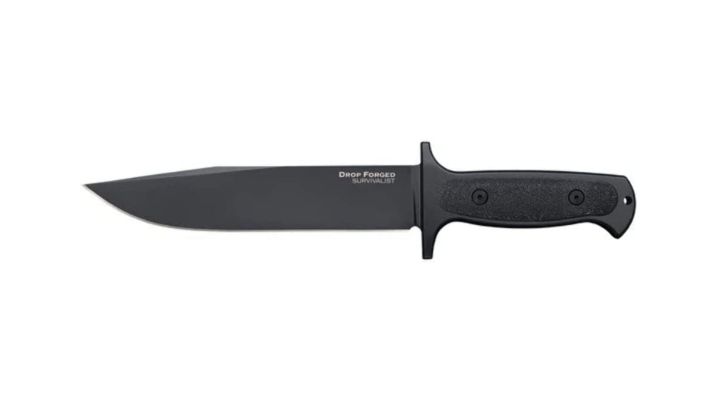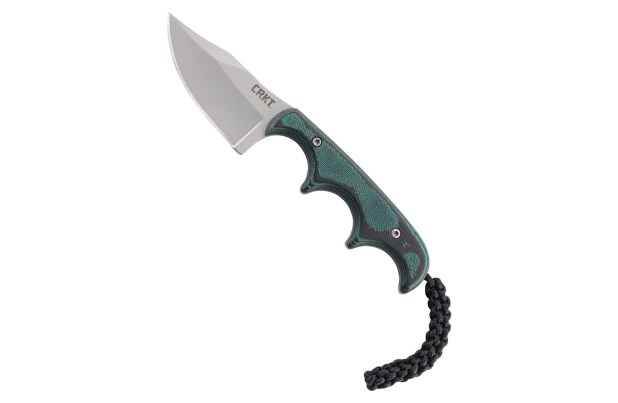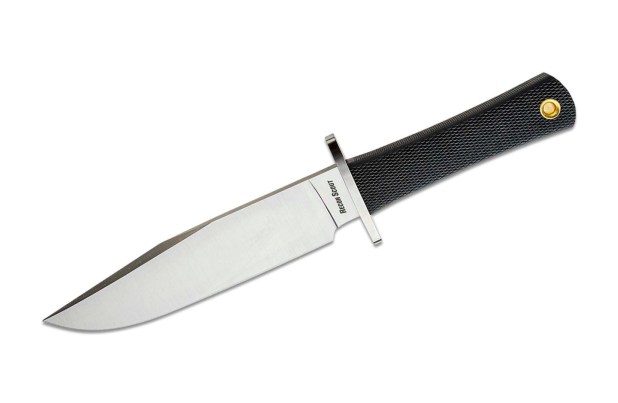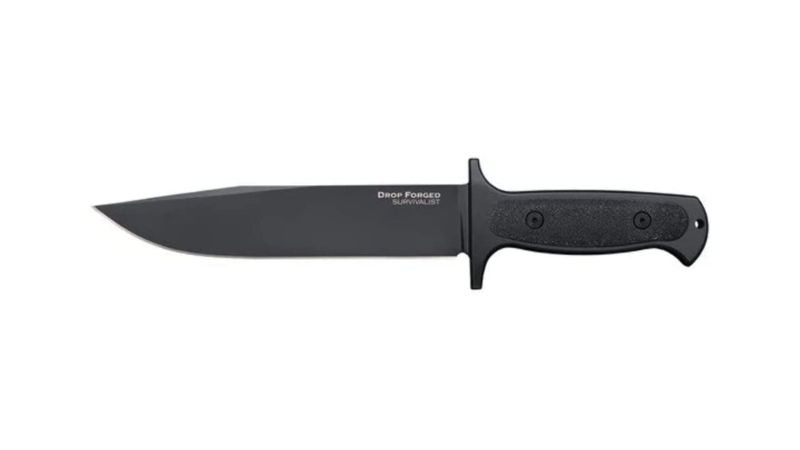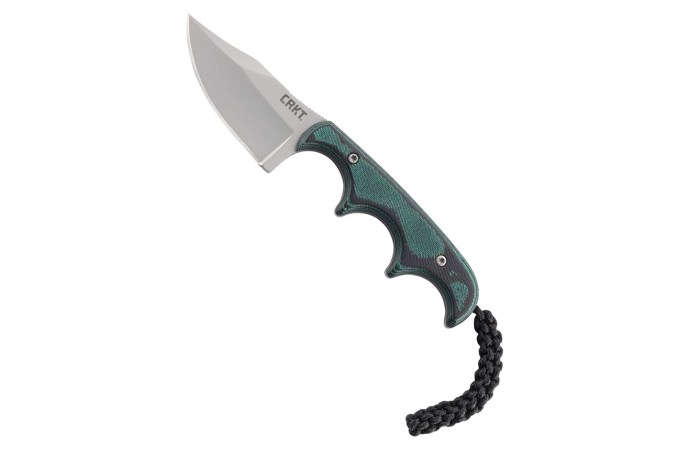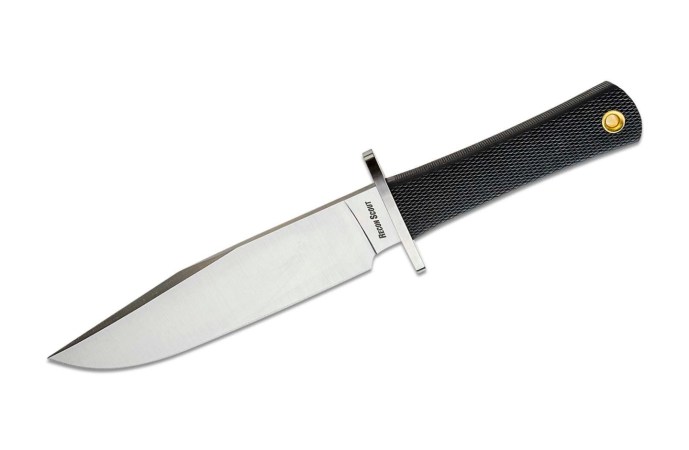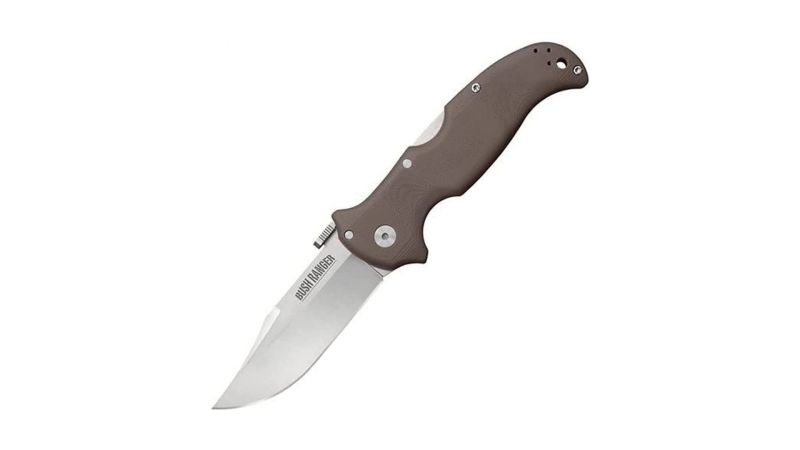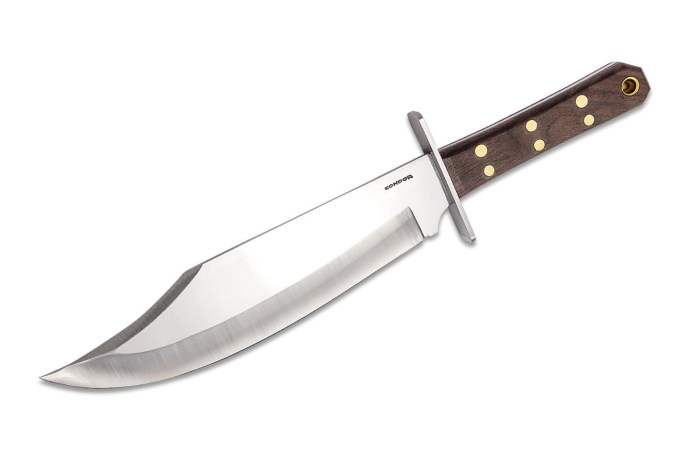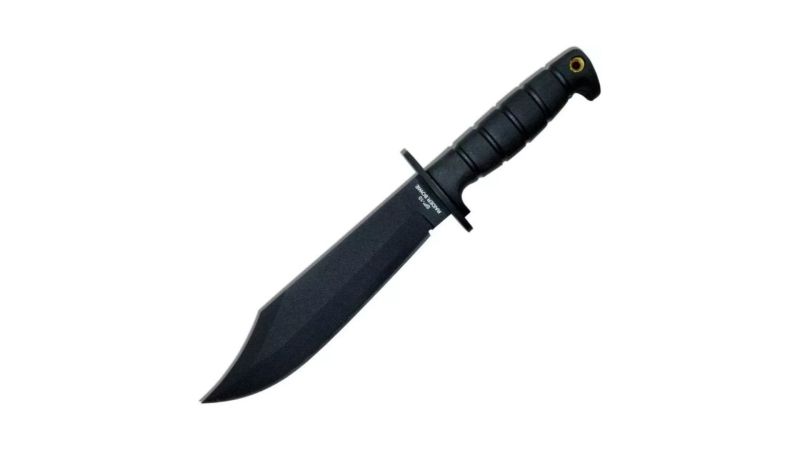We may earn revenue from the products available on this page and participate in affiliate programs.

One of my earliest memories is that of my older sibling telling me the legend of the Bowie knife: how it was forged with secret techniques that made it flexible yet tough, and sharp enough that it could cut hair just by touching it; how James Bowie used it to defend himself from several other men on a sandbar, and how he eventually died defending the Alamo; and how the original secret techniques used to make the original Bowie are long-since lost to time.
There are few blades as ubiquitously American as the Bowie, despite its pop culture association with a particularly feisty Australian. It’s also one of the most mispronounced blades on the market; that’s right, if you haven’t been calling it a “boo-ee” knife, you’re very much incorrect. But don’t worry, that’s why we’re here, correcting misconceptions and myths while bringing you the best Bowies worth carrying.
- Best Overall: Cold Steel Drop Forged Survivalist
- Best Budget: SMKW Exclusive CRKT Minimalist Bowie
- Editor’s Choice: Cold Steel Recon Scout
- Best EDC: Cold Steel Bush Ranger
- Best Traditional: Condor Undertaker
- Best Tactical: Ontario Knife Company SP10 Marine Raider
Best Overall
Cold Steel Drop Forged Survivalist
Best Budget
SMKW Exclusive CRKT Minimalist Bowie
Editor’s Choice
Cold Steel Recon Scout
Best EDC
Cold Steel Bush Ranger
Best Traditional
Condor Undertaker
Best Tactical
Ontario Knife Company SP10 Marine Raider
Things to consider before buying a Bowie knife
What makes a Bowie is a set of characteristics, which Arkansas historian Russell T. Johnson said best: “It must be long enough to use as a sword, sharp enough to use as a razor, wide enough to use as a paddle, and heavy enough to use as a hatchet.”
Types of Bowies
While the Bowie knife is well-known and easily recognized, it’s not as easily defined. In general, however, most modern Bowies are larger fixed-blade knives, typically with a blade length of six to 20 inches. In many ways, larger Bowies are merely America’s version of the short sword. Despite both historical and modern-day exceptions, most are clip-point or trailing point blades with deep bellies and needle-like tips, making them extremely good at both penetration and slicing deep. That needlepoint can be excellent for utility and bushcraft tasks, like boring a hole in a piece of wood to allow the use of a bow drill to start a fire. The downside, of course, is that the thin tip tends to be more fragile than other popular blade shapes like the drop point or Americanized tanto.
Key features of a Bowie knife
Steel type
There are hundreds, if not thousands, of different types of steel alloys out there, and few are created equal. An unfortunate majority of Bowies are made from no-name steel. Whether this takes the form of cheap stainless steel in that Mossy Oak Bowie you found at a local store, fragile pattern-welded Damascus steel Bowies at a vendor that are astronomically overpriced, or shiny show-pieces that substitute a buffing wheel for actual quality materials and construction, there are plenty of examples of what to avoid.
In general, you’ll find that most quality Bowies are made from either high-carbon steel or premium steel that may be either high-carbon or stainless. Popular examples would include 1075, 1095, and SK5 high-carbon steel, as well as CPM 3V, S35VN, S30V, and 20CV for premium offerings. Regardless of the type of steel, you’ll want to maintain the blade by keeping it clean, dry, and lightly oiled. However, in the case of non-stainless steel alloys, this is double the case, due to the increased risk of rust.
Knife Informer and Blade HQ both have decent guides if you need more information, detailing the edge retention, toughness, and corrosion resistance of the more popular alloys currently on the market.
Blade length
Historically, most knives considered Bowies were almost indistinguishable from short swords due to their length, frequently being between 12 and 20 inches in blade length, with plenty of them being even longer. Given that they were frequently carried to serve as a weapon, makeshift hatchet, and anything else that suited the user’s fancy at the time, this made sense.
Nowadays, however, you’re more likely to find them between six and 12 inches in length, though there are noted exceptions both longer and shorter. Naturally, a longer blade is going to be more difficult to comfortably carry, is more likely to be restricted in many states, and raises eyebrows, whereas a shorter blade is handier for EDC.
Handles
As always, there are many options available for handles, and it’s relatively easy to find a Bowie with your material and style preference. For materials, leather and wood were commonly used historically, with leather being primarily used in conjunction with a rat-tail tang, while wood was used with a partial, rat-tail, and full (in the case of the coffin-style handle) tang blades. Unfortunately, neither of these materials are nearly as durable as modern materials like G10 and micarta, but thankfully there are plenty of fantastic Bowie options that are made with modern materials. These are frequently textured to enhance your grip in harsh conditions and are often combined with full tangs to ensure maximum longevity.
FAQs about Bowie knives
Q: Is a Bowie knife illegal?
A: At one point in time, Bowies were illegal in several states, but only a handful today still have restrictions on Bowies. Most of those merely prohibit conceal-carrying a Bowie, or prohibit minors and felons from owning them. For more information on state knife laws, check out the legal guide on KnifeUp.
Q: How much does a Bowie cost?
A: Because Bowie knives require more materials, they tend to cost more than smaller knives. Most mid-tier Bowies can cost anywhere from $100 to $300. The price increases with better materials, quality control, warranty, etc. However, the sky’s the limit with custom knives made with exotic materials and handmade blades.
Q: What is a coffin-style handle?
A: A coffin-style handle is a vintage design that features a full-tang blade with two handle scales pinned to either side. The reason for its moniker is its side profile, which has the appearance of an old, wooden coffin. The handle gradually widens to the pommel, which has three sides that resemble the head of a coffin. While it’s not the most ergonomic handle by modern standards, it’s far from uncomfortable and has an undeniable aesthetic.
Final thoughts
Our main goal in this article was to pick through all the cheap, no-name stainless steel blades, over-polished monstrosities, and overpriced Bowies that flood the market to bring you a balance of good materials, construction, and quality control, all at a reasonable price — and that’s exactly what the Cold Steel Survivalist brings to the table.
Methodology
For this article, we relied on our own experiences and testing, as well as suggestions from various internet forums, including a few Facebook groups for knife enthusiasts. We relied on these sources because members typically provide better feedback than product review sections on most knife websites.
We chose these Bowies for their overall quality and performance. We looked for blades that were long-lasting, versatile, and useful. We looked at the materials used for the blade, handle, and sheath, as well as the manufacturer’s quality control record. Because of their improved rust resistance, blades made of high-quality stainless or semi-stainless steel were preferred.
Finally, we eliminated Bowies with uncoated high-carbon steel blades, wooden handles, leather, or similar materials due to their proclivity to be damaged by temperature and humidity changes — hardly the kind of thing you’d want in a blade you’d carry with you every day, regardless of the environment. Obviously, an exception was made for our choice of the best traditional Bowie, due to modern materials not being an option.
For more information on our methodology and product reviews, check out the Task & Purpose review guidelines.
